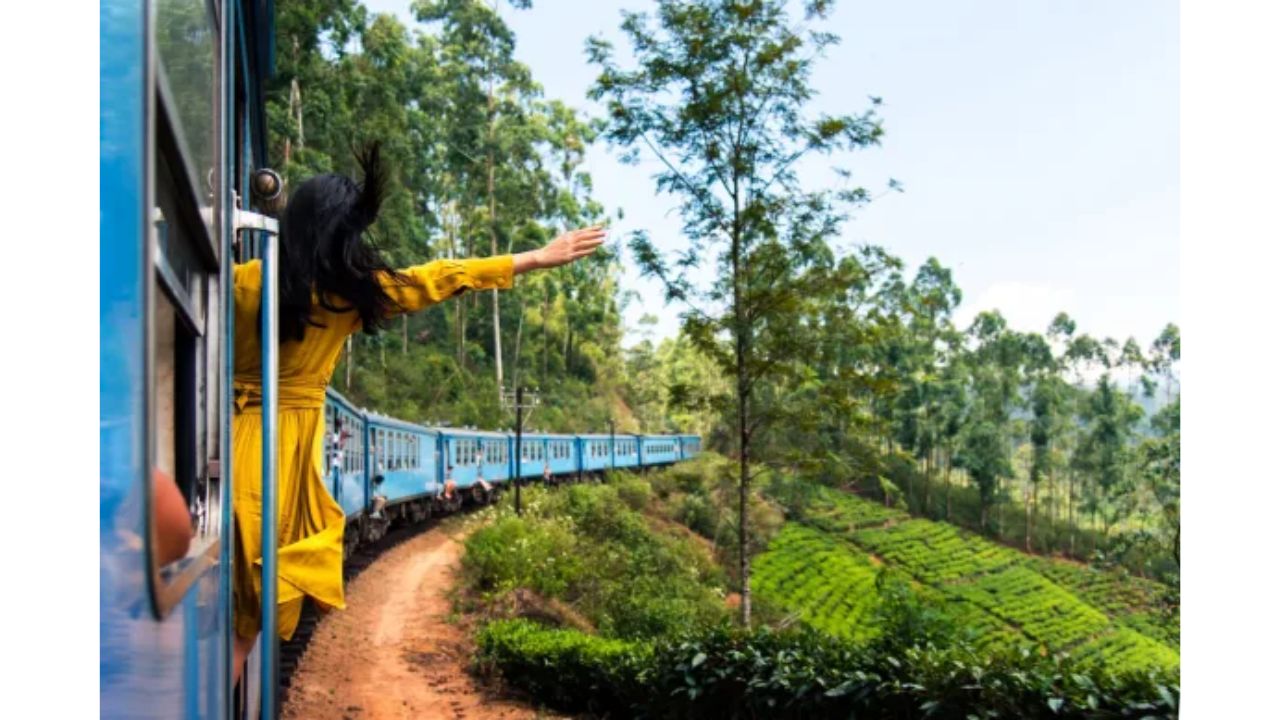Experience One of the World’s Most Spectacular Train Rides for Less Than $10: I’m not bothered by a little discomfort. Sitting shoulder to shoulder, there is an occasional discomfort. As I am preoccupied with other things, I am unfazed by even the faintest traces of a fellow passenger’s body fragrance. I’m mesmerised by Sri Lanka’s countryside as it slowly passes me by, hardly gazing into the abyss.
The island nation offers one of the most scenic train rides in the globe. Its 1561-kilometer rail network winds through gently sloping slopes lined with tea plantations, gorges, rivers, waterfalls, and villages, much like the veins of a human body.
Some train velocities on the network are as low as 40 kilometres per hour, allowing ample time for an impromptu photoshoot.
During British rule, Sri Lanka’s first railway connected the nation. The railway was constructed in 1864 to convey coffee from the Kandyan hillside in central Sri Lanka to the Colombo port in the west.
The preference shifted from legumes to leaves as the tea industry flourished, resulting in the expansion of railroads. Other agricultural developments, such as coconut and rubber plantations, occupied various regions of the country, with additional expansions made to meet industrial demand.
Today, the historic railway is a means of transportation and a must-do for train enthusiasts.
Experience One of the World’s Most Spectacular Train Rides for Less Than $10
Nine years ago, I made my first locomotive voyage in Sri Lanka, travelling from Colombo to Kandy (approximately 125 kilometres) on a vintage train. I was on a backpacker budget at the time, so I did not inquire about the price difference between second and third class. In actuality, not much. I sat in the third-grade classroom on a chair that demanded proper posture. If only I had been able to maintain a 90-degree angle for nearly four hours uninterrupted.
If I had spent a few extra dollars on a second-class ticket, I would have received an armrest, a slightly reclined, cushioned seat, and cooling ventilation. Or, I could have pampered myself in first class with comfortable, numbered seating, thereby avoiding the frantic stampede to secure a window seat. First-class passengers, unlike those in second and third class, have access to air-conditioned carriages; how luxurious!
If only I had known about class distinctions and advance booking at the station. This, along with the decision to disembark at Kandy instead of continuing on, was a novice error. The scenery, not the accommodation, stiffens the neck after Kandy.
On this journey, I board a new Chinese-made S14 train in second class, its glossy blue, white, and red paint lending the historic train journey a vibrant makeover. The amenities between classes are comparable, and newer trains have restaurant carriages.
I embark on a three-hour voyage from Kandy to Nanu Oya, which is the gateway to Sri Lanka’s “Little England,” Nuwara Eliya. Green highlands dotted with Tudor-style architecture, colonial buildings, pointed-roof cottages, manicured gardens, and even a red telephone booth in the British manner from the past. Even the mild climate of Nuwara Eliya resembles its alter ego.
But before I enter this jumble of worlds 80 kilometres distant, I must capture others.
Without a second-class seat assignment, I decide to diversify my experience beyond gazing out the window. I recline next to a local in the doorway of one of the carriages, and we have a brief conversation about cricket and Australia, which are common topics of small talk among locals. As the train rattles past villages, emerald valleys, and plantations dotted with tea pickers in bright saris, our hands grasp the handles firmly. Even with the jostling, I never lose my joy as I pass by this mesmerising scenery. Indeed, it is extraordinary.
I stick my head out of the window to observe the carriages behind me; they resemble a colourful caterpillar leisurely winding its way around verdant mountain curves. Other passengers stick out more than their necks; the fearless hang themselves outside carriage doorways, despite the peril, a pose that has become an Instagram staple.
We make a brief pause at Watawala, where a vendor sells samosas. And another passenger enters to distribute his bag of dal vada, a popular street food snack consisting of deep-fried spiced chickpea balls, throughout the carriages. This is the type of fast-food delivery service I prefer.
Tunnel travel resembles an amusement park excursion. As we wind through the night, passengers exclaim “whoo!” from the windows and doors as they express their excitement.
If I continue past my current stop, I will cross the magnificent Nine Arch Bridge, arguably Sri Lanka’s most renowned landmark, just outside the tourist town of Ella. Despite not going the full distance (though I do visit the bridge later), I have three hours of entertainment: inexpensive exhilaration, breathtaking scenery, and transportation to my next destination. The ultimate highlight of my Sri Lankan vacation costs only 1200 rupees, or roughly $6. The freedom to leave my comfort zone.


















